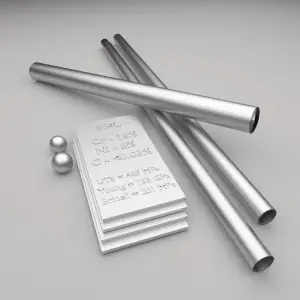

Its excellent mechanical properties and predictable performance against corrosion make 18/8 the most widely used type of stainless steel in the market. Particularly in the amounts of chromium and nickel, austenite stability can only be achieved within the range between 16%Cr-6%Ni and 19%Cr-12%Ni. The table above indicates the maximum limits to how much these levels can be tweaked. Furthermore, applications that require gas tungsten arc welding require high sulfur content. For example, applications that require lower work hardening normally require relatively high nickel content. These compositions are normally tweaked according to the intended use and preference of a steel manufacturer.

18 8 stainless steel definition series#
The chemical composition (weight percent) of the most common 18/8 variations among the 300 series stainless steels are listed in the table below: This includes other grades like AISI 302 and 305, among others. In other applications, like fasteners, 18/8 can generally refer to any 300 series that shares the same 18% chromium and 8% nickel composition. Hence, it can be said that Type 304 is only a subset of 18/8 stainless steel. It does not indicate the amounts of other components which may not necessarily meet the requirements to certify as Type 304. However, it should be noted that the term “18/8” only specifies the approximate amounts of chromium and nickel content. When the AISI/SAE steel numbering system was established, 18/8 started to become closely associated with Type 304 stainless steel- the most commonly used type among all 300 series stainless steels, especially in the cookware industry. The name “18/8” was popularly used by many steel companies to refer to this kind of steel before the standards for classifying wrought stainless steel were developed. However, aside from these two, it may also contain traces of carbon, nitrogen, molybdenum, manganese, silicon, sulfur, phosphorus, and copper in different amounts, depending on the intended application.

18/8 stainless steel is named in reference to its 18% chromium and 8% nickel approximate content.


 0 kommentar(er)
0 kommentar(er)
